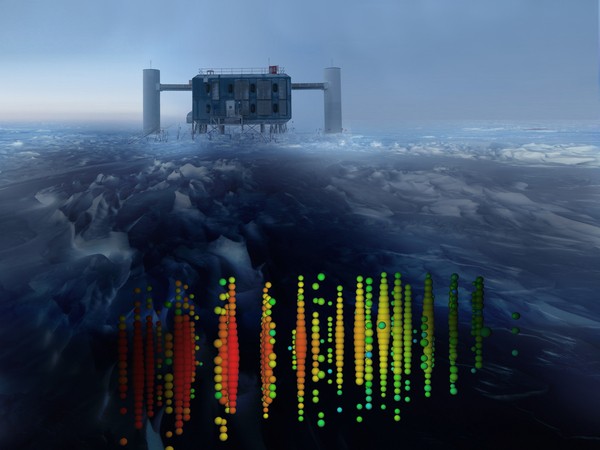Scientists who are working in the Antarctic region have now confirmed that cosmic neutrinos exist which are considered as mysterious, ghost-like particles that travelled across the galaxy from beyond the outer reaches of the universe.
Astronomers believe that these particles can transport messages from galaxies located millions of light years away where they can solve some of the universe's biggest mysteries.
Neutrinos originate from the most violent and colossal cosmic events in the universe where they are emitted from black holes and supernovae or exploding stars as subatomic particles. Scientists find it challenging to detect them since they possess extremely high energies and virtually no mass at all.
Scientists also believe that they are ideal in carrying pristine information since they remain unchanged even if they travel across millions of light years in deep space.
Albrecht Karle from the University of Wisconsin-Madison and his team have now analyzed billions of particles that they detected from 2010 to 2012 from their IceCube Neutrino Observatory in Antarctica. They discovered and successfully identified 21 ultra high energy muons which are secondary particles that are produced on extremely rare events when neutrinos get in contact with other particles.
Scientists now believe that these muons are manifestations of neutrinos that have traveled beyond the solar system from distant galaxies. These observations were conducted based from data retrieved from more than a thousand optical sensors that are positioned like strings of pearls underneath the snow and ice in the southern polar region.
Back in 2013, scientists have viewed two candidate neutrinos using these sensors where they nicknamed them "Bert and Ernie" however, these two isolated events were too few to detect their point of origins but more sightings can help scientists locate their real source which is potentially beyond the Milky Way galaxy.
In tracing the origins of these neutrinos, scientists search for a trail of light when neutrinos collide with other particles as this light becomes a mirror that reflects the trajectory where the neutrinos supposedly come from. This data is extremely crucial in order to know the position and activity of numerous cosmic events in the most distant reaches of the universe.
According to Vladimir Papitashvili who is the astrophysics and geospace sciences program director at the National Science Foundation's Division of Polar Programs, this is a successful confirmation of IceCube's recent discoveries that can pave new ways for particle physics.
Karle adds that neutrinos can provide pivotal clues about the origin of the most energetic processes occurring inside the universe and could even give clues about the fundamental properties of particle physics and the origin of the elusive dark matter.
This study is published in the journal, Physical Review Letters.






















